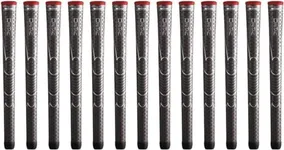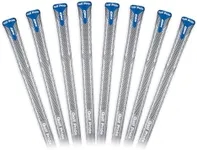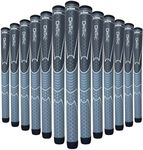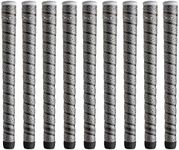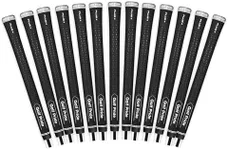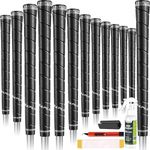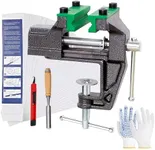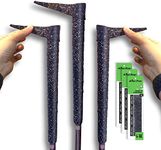Buying Guide for the Best Golf Grips
Choosing the right golf grip can make a big difference in your comfort, control, and performance on the course. With so many options available, it’s important to consider how a grip feels in your hands, how it supports your playing style, and how much feedback it gives you during your swing. Ultimately, the best golf grip is the one that feels comfortable and secure for you, enhances your swing, and suits your playing environment. By understanding the main features and specifications of golf grips, you can make a confident choice that truly supports your game.SizeGolf grip size refers to the thickness of the grip and is one of the most important factors because it influences how well you control the club and how comfortably you can swing. Grips are commonly available in standard, midsize, oversize (jumbo), and undersize/petite options. If a grip is too small, it can cause your hands to overwork, potentially leading to hooks; too large, and it may limit hand action, possibly causing slices. To find the right size, measure your hand or test different sizes to see what feels best when taking your grip. Comfort and natural grip pressure should guide your selection, and if you experience hand fatigue or miss-hits, consider trying a different size as this can be a strong indicator you need to adjust.
MaterialGolf grips are made from materials like rubber, synthetic blends, corded options, or leather. Each material offers a different feel and durability. Rubber and synthetic grips tend to be softer and more cushioned, leading to better comfort and absorption of shock, which suits players who prioritize feel and play in dry conditions. Corded grips have woven strands for added traction and are ideal for players who want firm control, often playing in humid or wet conditions as cords help moisture management. Leather grips are traditional and can provide a premium feel but may require more maintenance and are less common today. Choosing material depends on your tactile preference, typical weather conditions, and how much grip traction you want during play.
TextureTexture relates to the surface pattern and how 'grippy' a golf grip feels in your hands. Smooth grips tend to feel softer and are comfortable for people with sensitive hands but may slip in moist conditions. Heavily textured or patterned grips, on the other hand, offer extra traction and are helpful if your hands sweat, you play without gloves, or want increased feedback in all weather. Moderate textures can offer a balance of comfort and secure hold. Consider the environment you mostly play in and your personal need for grip when selecting texture.
FirmnessSome grips are soft and cushioned, while others are firmer and less forgiving. Softer grips can absorb more shock and make for a comfortable hold, which is beneficial for those with joint pain or who prefer a more forgiving feeling during impact. Firmer grips provide more feedback and control, usually preferred by advanced players who want precise communication from the club. To pick the right firmness, think about your hand sensitivity, how much feedback or vibration you like to feel, and whether comfort or control is your top priority.
TaperTaper refers to how much the grip's diameter decreases from the butt (top) end to the tip. Standard grips have a traditional taper, where the grip is thicker at the top and thinner at the bottom, encouraging more control with the lead hand. Reduced taper or non-tapered grips are the same thickness throughout, encouraging equal grip pressure and reducing the chances of overactive hands. If you struggle with grip pressure or tend to rotate your hands excessively during your swing, experimenting with taper profiles might help you find more consistency in your game.
WeightGrip weight can subtly influence the feel and balance of your club. Lightweight grips can make the club feel slightly head-heavier, possibly increasing swing speed, while heavier grips can offer more stability and may help smooth out a quick swing. Most players use standard-weight grips, but if you're looking to fine-tune the feel or balance of your club, experimenting with grip weight may be beneficial. Evaluate if your clubs feel too light or heavy or if a small change in balance could improve your swing rhythm before making a choice.
